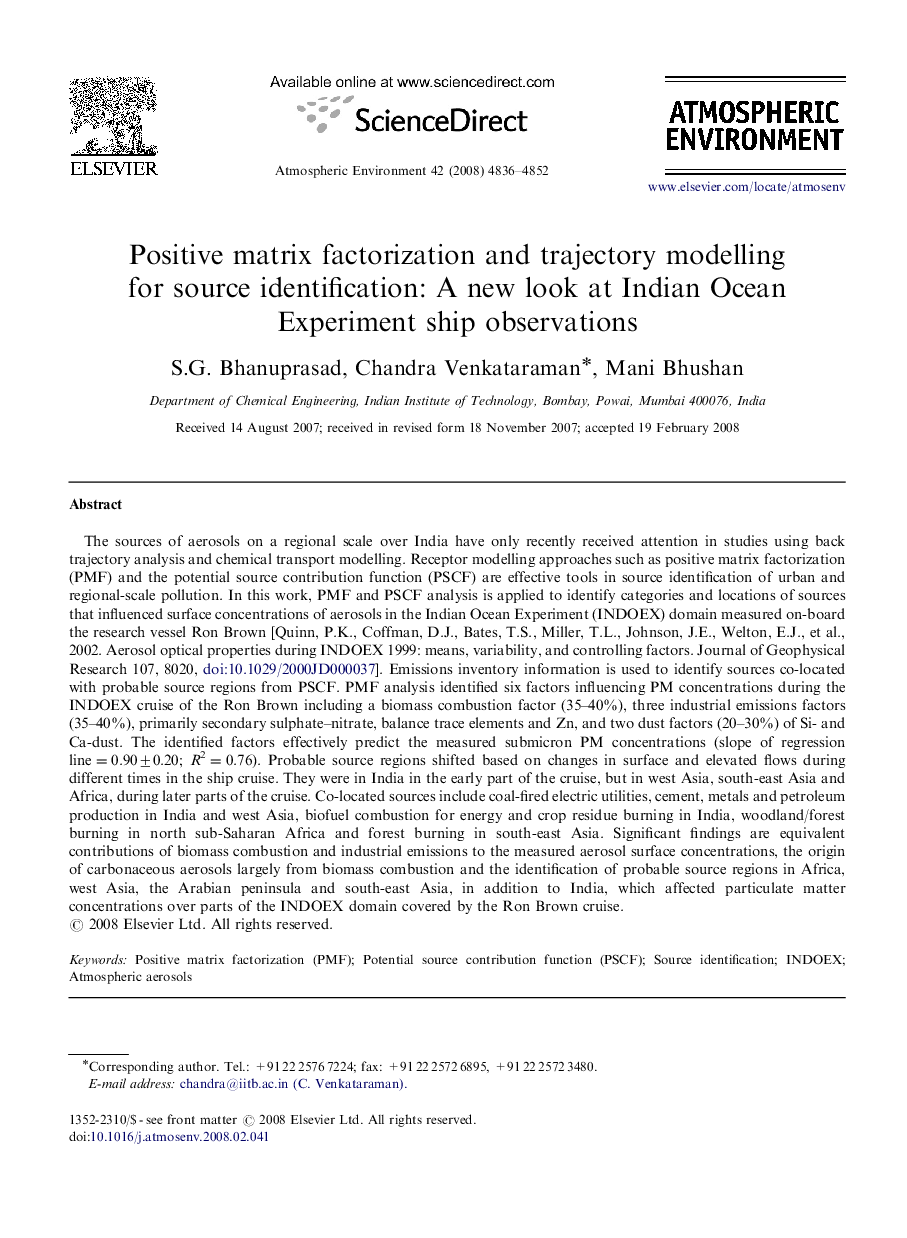| کد مقاله | کد نشریه | سال انتشار | مقاله انگلیسی | نسخه تمام متن |
|---|---|---|---|---|
| 4442248 | 1311144 | 2008 | 17 صفحه PDF | دانلود رایگان |

The sources of aerosols on a regional scale over India have only recently received attention in studies using back trajectory analysis and chemical transport modelling. Receptor modelling approaches such as positive matrix factorization (PMF) and the potential source contribution function (PSCF) are effective tools in source identification of urban and regional-scale pollution. In this work, PMF and PSCF analysis is applied to identify categories and locations of sources that influenced surface concentrations of aerosols in the Indian Ocean Experiment (INDOEX) domain measured on-board the research vessel Ron Brown [Quinn, P.K., Coffman, D.J., Bates, T.S., Miller, T.L., Johnson, J.E., Welton, E.J., et al., 2002. Aerosol optical properties during INDOEX 1999: means, variability, and controlling factors. Journal of Geophysical Research 107, 8020, http://dx.doi.org/10.1029/2000JD000037]. Emissions inventory information is used to identify sources co-located with probable source regions from PSCF. PMF analysis identified six factors influencing PM concentrations during the INDOEX cruise of the Ron Brown including a biomass combustion factor (35–40%), three industrial emissions factors (35–40%), primarily secondary sulphate–nitrate, balance trace elements and Zn, and two dust factors (20–30%) of Si- and Ca-dust. The identified factors effectively predict the measured submicron PM concentrations (slope of regression line=0.90±0.20; R2=0.76). Probable source regions shifted based on changes in surface and elevated flows during different times in the ship cruise. They were in India in the early part of the cruise, but in west Asia, south-east Asia and Africa, during later parts of the cruise. Co-located sources include coal-fired electric utilities, cement, metals and petroleum production in India and west Asia, biofuel combustion for energy and crop residue burning in India, woodland/forest burning in north sub-Saharan Africa and forest burning in south-east Asia. Significant findings are equivalent contributions of biomass combustion and industrial emissions to the measured aerosol surface concentrations, the origin of carbonaceous aerosols largely from biomass combustion and the identification of probable source regions in Africa, west Asia, the Arabian peninsula and south-east Asia, in addition to India, which affected particulate matter concentrations over parts of the INDOEX domain covered by the Ron Brown cruise.
Journal: Atmospheric Environment - Volume 42, Issue 20, June 2008, Pages 4836–4852